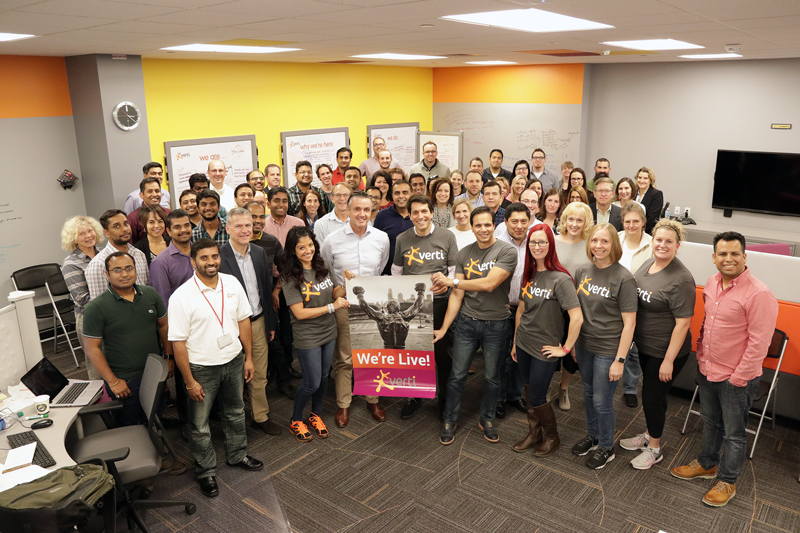THIRD ARTICLE ON THE ARQUIAGILE CHALLENGE
We invite you to learn more about AGILE Methodology from our MAPFRE MEXICO colleague, Mauricio Moreno, who offers us a detailed analysis of its concepts, development and applications.
The dynamics within organizations are accelerating at a dizzying pace; they are immersed in a constantly evolving environment, determined by the expectations and demands of clients seeking products and services at ever greater speed. All this calls for new ways of working so as to satisfy demand faster, without sacrificing their standards and other differentiating values that set them apart from their competitors. In this environment, groundbreaking alternatives emerge, such as agile methodologies for the development of projects which, given their characteristics, require agility and flexibility. However, any change must be accompanied by a process of implementation and acceptance until people fully assimilate the new system. This entails taking on board a new way of tackling problems, working and organizing tasks, adopting a results-based evolutionary approach, with collaborative work and continuous interaction between all those involved spanning departmental structures. The contents of this work focus precisely on managing these changes, putting forward ideas that can help steer the organization toward a new way of doing things that goes beyond the underlying concepts, as well as on its component roles, or the fundamental questions when it comes to setting the stage for this change.
The approach is depicted from a top-down strategic perspective and a bottom-up tactical perspective. The active participation of Senior Management is a determining factor, not just as the main sponsor, but also as the facilitator of the activities. Nonetheless, an equally relevant role is that of the implementation and execution team involved. It is responsible for maintaining constant communication between the various parties concerned, with feedback and monitoring being key aspects in order to maintain the endeavor and, later, for detecting opportunities for improvement that can facilitate the adoption and incorporation of more members of the organization into this transition toward a new reality.
Development
Turning to a new methodology offers opportunities for introducing improvements or for solving problems, but it also poses significant challenges that must be confronted in order to achieve a positive outcome that benefits the organization. The following are highly relevant aspects that facilitate the adoption of the Agile Methodology.
Orientation of the strategy
- Why change?
- What are we going to change?
- How are we going to do it?
- When will it happen?
- Where does the change begin and end?
- Who is in charge of overseeing it?
It is essential that Senior Management is convinced of the need for change, promotes it and supports the design of the transformation strategy.

Definitions and roles
There are a number of defined roles that successfully adopt this methodology in order to achieve the expected results.
Product Owner. In charge of maximizing the value of the product, they must be more than mere requirement managers. They are active business representatives with a clear vision of the product’s present and future, empowered to make decisions and act as an effective link with the project sponsors and other stakeholders. They are thus able to correctly convey the demand and the value of the product in which resources are being invested.
Scrum Master. Responsible for managing the execution and quality of the Scrum process and eliminating impediments to deliverables. Their greatest contribution should be as a mentor to the teams, with the know-how needed to train others in this methodology.
Agile Team. This is a group of people who develop the product in an autonomous, self-organized fashion in order to achieve the results forecast for each sprint undertaken to add value to the product. These self-governing teams organize the work and make their own decisions, thereby assuming their commitment to fulfill objectives and deliver results.
The implementation of effective, well-trained teams, convinced of the need to adopt a new way of working, is undoubtedly one of the most important challenges posed by the implementation of this methodology. However, once overcome, it also becomes one of the most important catalysts for change.
The experience personnel gain by actively interacting and collaborating, and seeing the result of their work, motivates them to consider further challenges of greater complexity. It also represents added value for all those involved who, on finding that their work makes greater sense, participate more enthusiastically.
Any change must be accompanied by a process of implementation and acceptance until people fully assimilate the new system. This entails taking on board a new way of tackling problems, working and organizing tasks, adopting a results-based evolutionary approach, with collaborative work and continuous interaction between all those involved spanning departmental structures.
AGILE provides a series of added values that represent benefits not only from the point of view of the results it achieves, but also as a vector that boosts the development of capacities such as the interrelationship between stakeholders, teamwork and the formation of collaborative work environments
Launching those projects in which the methodology is applied as soon as possible is the best way to achieve maximum dissemination. This is why it is so important to establish metrics and indicators that reflect the rate of progress and also the results achieved, without forgetting that agile methods are iterative
Communication
Communication is a high-value element for the change. A strategy should be defined, indicating the phases in which information will be given, as well as the target audiences, the media, the messages and their duration and frequency.
Implementation
For the success of this stage it is imperative to have solid training in the fundamentals of the methodology, maintain hands-on team training and be able to count on the presence of people with prior experience in the application of agile methods to act as a reference and guide throughout the adoption process. Given its characteristics, the role of Scrum Master takes on a noteworthy dimension, provided that the person has the qualities needed to support the change and foster team cohesion.
Measurement
One of the principal expectations is results orientation. To work on projects with agile methodology, it is advisable to define the aspects to be measured and the metrics to be used, taking into account the fact that the tasks performed using this kind of methodology do not necessarily suit the same indicators. It is essential to identify the relevant, measurable aspects that allow these initiatives to be correctly evaluated and provide information that, duly analyzed, can identify real and potential improvements for the different phases, in order to maximize the benefit of working under a different paradigm.

Conclusions
The adoption of new work techniques and methodologies represents a viable alternative to help organizations meet the challenges of an increasingly competitive and more complex environment. Like any methodology that is implemented systematically and diligently, Agile provides a series of added values that represent benefits not only from the point of view of the results it achieves, but also as a vector that boosts the development of capacities such as the interrelationship between stakeholders, teamwork and the formation of collaborative work environments.
Launching those projects in which the methodology is applied as soon as possible is the best way to achieve maximum dissemination. This is why it is so important to establish metrics and indicators that reflect the rate of progress and also the results achieved, without forgetting that agile methods are iterative. And so, in every case, the information will have to be carefully analyzed, especially if it is to be compared with other methods or other ways of working, in order to avoid misinterpretations or, even, the comparison of aspects which, given their characteristics, are in no way comparable.




